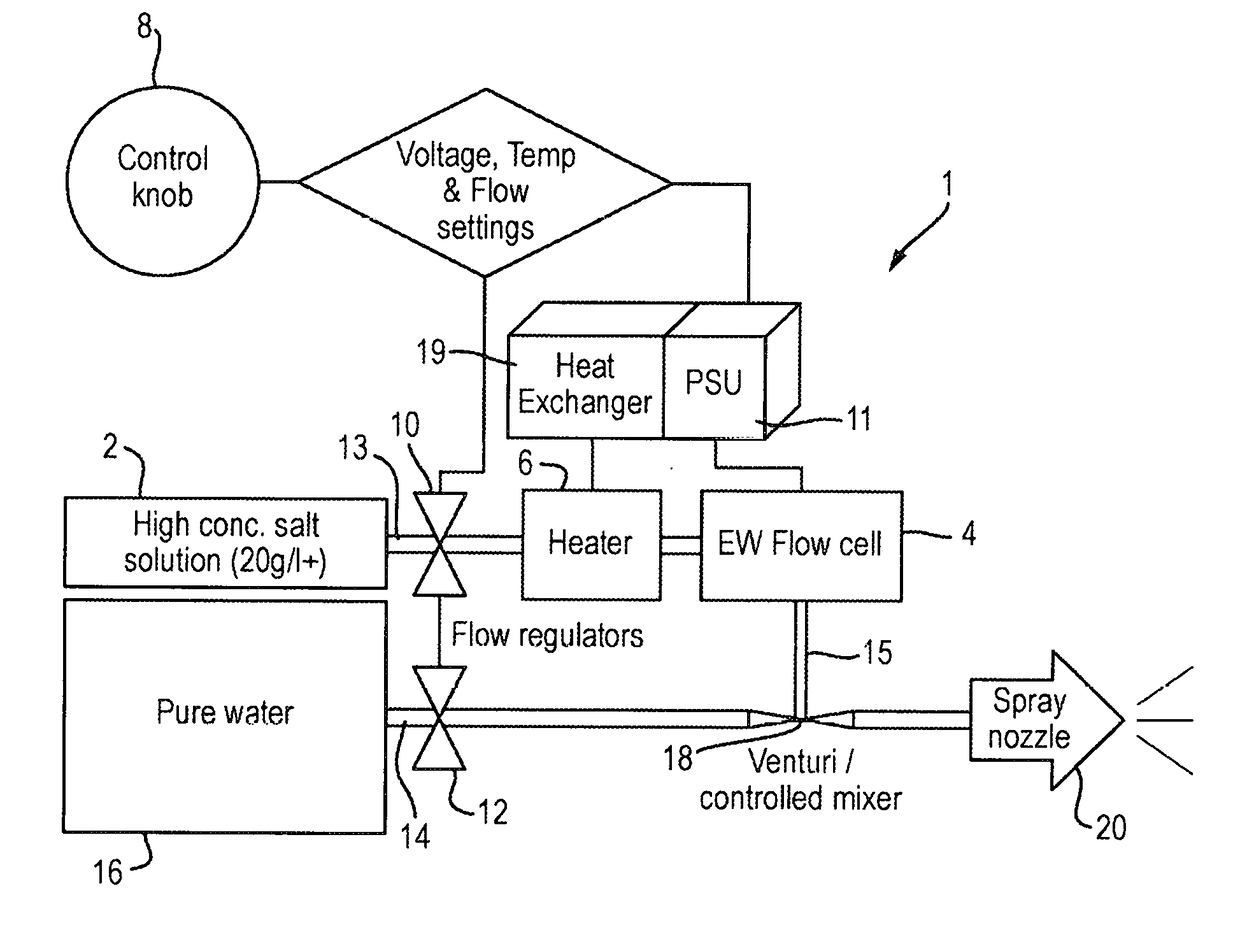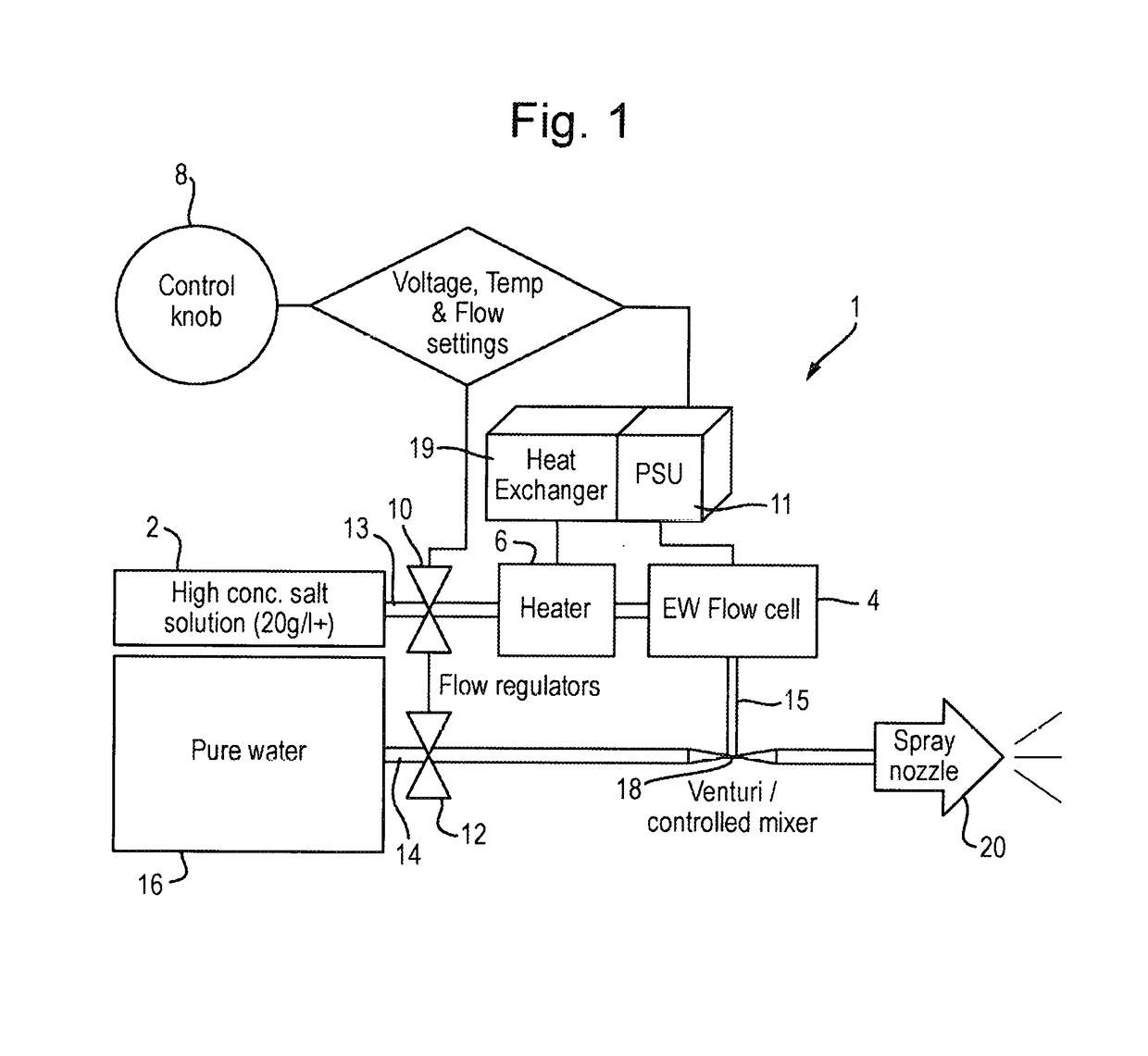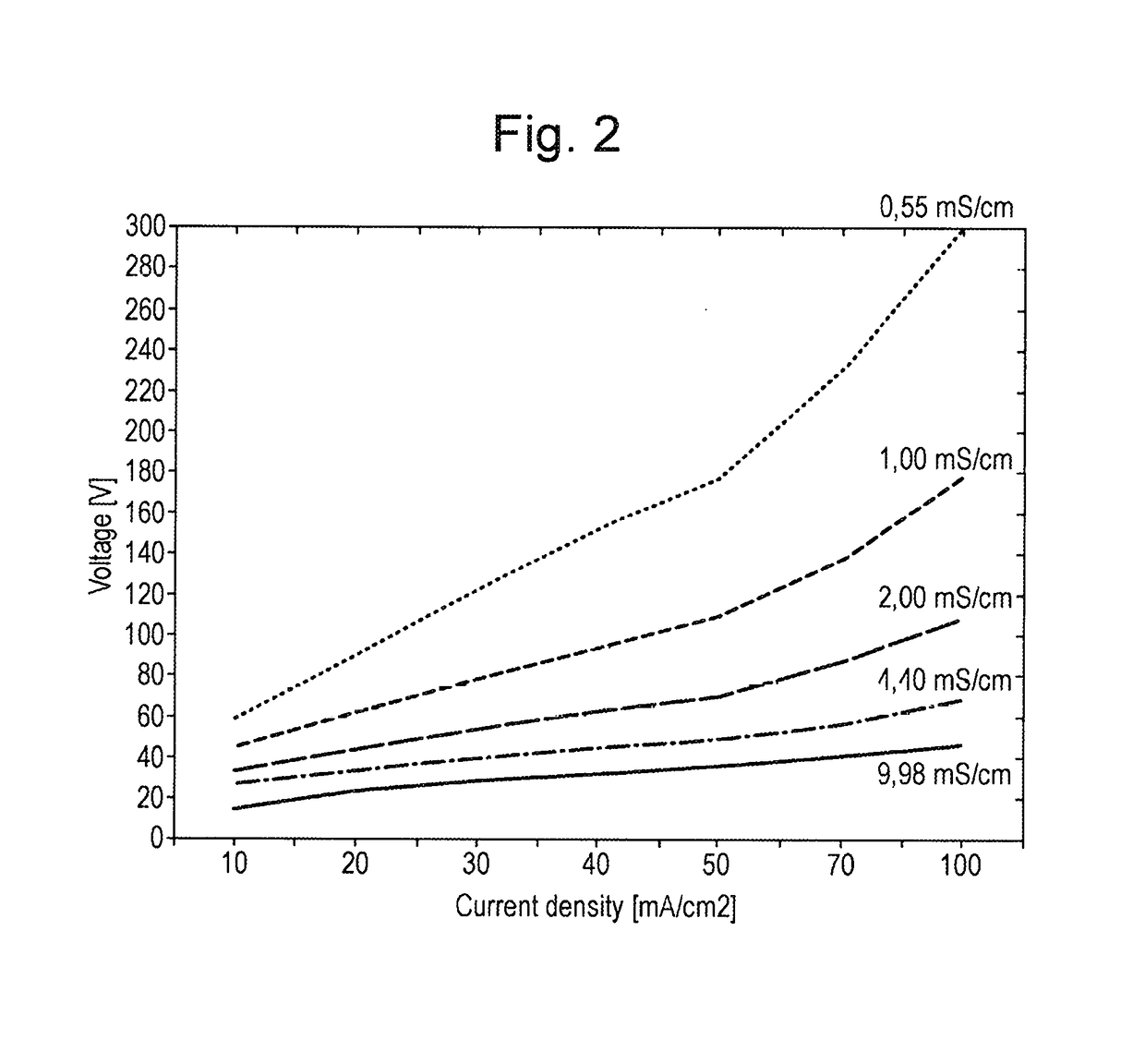Electrolysis system for producing electrolyzed water
- Summary
- Abstract
- Description
- Claims
- Application Information
AI Technical Summary
Benefits of technology
Problems solved by technology
Method used
Image
Examples
example 1
Effect of Salt Concentration on Voltage Required
[0052]With reference to FIG. 2, five different electrolyte solutions comprising sodium chloride solutions of varying salt concentrations were investigated in order to identify the relationship between the voltage required to be supplied to the cell in order to obtain electrolyzed water comprising a predetermined concentration of active species.
[0053]The sodium chloride solutions investigated had conductivity values, directly related to the concentration of the salt solutions, of 0.55 mS / cm, 1.00 mS / cm, 2.00 mS / cm, 4.40 mS / cm and 9.98 mS / cm respectively. The conductivity of a solution increases as the concentration of the salt solution increases.
[0054]It can be seen from FIG. 2 that the amount of voltage required to be supplied to the cell in order to provide electrolyzed water comprising a predetermined concentration of active species decreases as the conductivity of the salt solutions increases. Therefore, less voltage is required to ...
example 2
Relationship Between Salt Concentration and the Concentration of Active Species Produced by Electrolysis
[0057]Sodium chloride solutions were introduced into the reservoir of the system of FIG. 1. The concentration of salt within the sodium chloride solution of the electrolyte varied, however all other operating conditions including heat and voltage remained the same for the system. As can be seen from FIG. 3, the concentration of active species within the electrolyzed water produced in the electrolysis cell is directly proportional to the concentration of sodium chloride within the solution. As the concentration of salt within the electrolyte solution increases, the concentration of active species within the resultant electrolyzed water also increases.
example 3
Relationship Between Temperature and Conductivity of the Solution
[0058]FIG. 4 illustrates the relationship between temperature and conductivity for a saline solution, a water solution, and a combined saline and water solution. It can be seen that as a general rule, as the temperature increases so does the conductivity of the solution increase. The increase in conductivity is more marked for the pure water solution than it is for the saline solution (NaCl). From FIG. 4 it can be seen that as the temperature rises from 10° C. to 30° C., the conductivity of the saline solution (NaCl) approximately doubles. This increase in conductivity indicates that significantly reduced power would be required to be supplied to the electrolyte solution at the higher temperature, in order to provide electrolyzed water comprising a given concentration of active species.
[0059]It is also however known that the temperature of the solution is a major contributing factor towards the instability of electroly...
PUM
 Login to View More
Login to View More Abstract
Description
Claims
Application Information
 Login to View More
Login to View More - R&D
- Intellectual Property
- Life Sciences
- Materials
- Tech Scout
- Unparalleled Data Quality
- Higher Quality Content
- 60% Fewer Hallucinations
Browse by: Latest US Patents, China's latest patents, Technical Efficacy Thesaurus, Application Domain, Technology Topic, Popular Technical Reports.
© 2025 PatSnap. All rights reserved.Legal|Privacy policy|Modern Slavery Act Transparency Statement|Sitemap|About US| Contact US: help@patsnap.com



